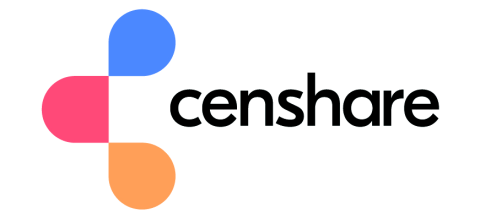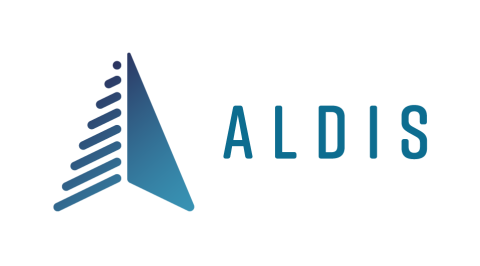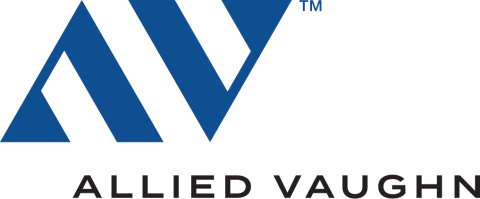DAM New York 2023

We are busy developing an exciting agenda for DAM New York 2023 so keep your eyes peeled for details. Register your interest here to be the first to hear about new sessions and speakers!
In the meantime, check out the new sessions announced below:
Bridging the Gap: Unlocking the Full Potential of Artificial Intelligence (AI) and Machine Learning (ML) for Digital Assets
The impact of AI and ML on digital assets in driving innovation, enhancing efficiency, and improving the user experience for digital assets is widely acknowledged. But unlocking the full potential of AI and ML requires connecting advances in ML to end-user applications, for example, promotional tools.
Join Meenakshi Jindal, Technical Lead, Content Infrastructure and Solutions at Netflix Inc. as she explores how to make the leap.
Challenges to be overcome include:
- Complexity of AI and ML algorithms, different output formats, and a deficiency of transparency in their decision-making process.
- A lack of standard methods for linking digital assets with ML-generated content insight.
- Uncertain timelines for defining and adopting ML to match user requirements.
Meenakshi Jindal discusses:
- Establishing an efficient data pipeline to manage large data volumes and deliver timely ML-generated end-user applications.
- User-friendly Search APIs that enable end-users to interpret and interact with the output of a wide range of ML algorithms.
- The adoption of agile development methodologies to power rapid experimentation, iteration and closed feedback loops.
HOT DAM! HIP-HOP at 50 is the New Kid on the Block
It's hard to believe that Hip-Hop is celebrating its first 50 years.
Many ‘disbelievers’ of the music and culture created by Black and Brown teenagers in The Bronx thought it was a passing trend, that would just fade away. They were wrong, and in 1999 The Schomburg Center was the first institution to start a special collection, dedicated just to Hip-Hop.
Although Hip-Hop has now been around for decades, it is still the new kid on the block when it comes to archiving and preservation. And DAM plays a critical role in the burgeoning field of Hip-Hop preservation.
Join Martha Diaz, Founder, Chief Curator and Archivist at the Hip Hop Education Center as she shares a history of Hip-Hop archiving and collection, highlights the projects that have served as milestones in its development, and the important contribution DAM is making.
Hip-Hop museums are popping up all over – both in the physical world and in the Metaverse. Hip Hop is transforming and reimagining how we use archives and artifacts through the use of technology.
The Martin Luther King, Jr. Center for Nonviolent Social Change
The Digital Transformation and Preservation of its Rich Archive Supporting the Ongoing Mission ‘To Educate’
Dr Kelisha B. Graves, Chief Research, Education, and Programs Officer of The Martin Luther King, Jr. Center for Nonviolent Social Change, will share the challenges of transformation that come with an effort to digitize, catalog and build a platform designed to inspire new generations to continue and advance the work of Dr Martin Luther King, Jr. and Mrs Coretta Scott King, and to empower change makers who are continuing the effort today.
This session will focus on the archives, collections and everything associated with preserving the plethora of documents, paintings, objects, and compelling audio and visual records that tell the important story (and official living memorial) of the lives, legacies, and teachings of Dr King and Mrs King.
Along with the practical challenges of defining and identifying many of the metadata categories, Dr Graves will cover the strategic direction of The King Library and Archives and its plans for the future.
The Crayola Gallery – a Truly Colorful Collective
Join Matthew Liotti, Visual and Video Content Producer at Crayola for a colorful overview of how Crayola leverages the DAM, ‘The Crayola Gallery’, as a digital hub to unite content pipeline efforts across global teams, global divisions, consumer campaigns, and local markets.
We’ll hear more about Crayola’s various DAM processes including organization, localization, governance, reporting, new and challenging file types, and future ambitions.
Starting from the beginning, we’ll be taken through the journey - a brief history from the first pack of Crayola Crayons, the business background, and the products.
Matthew will cover details of the DAM processes including:
- OmniChannel
- Teams Involved
- Start to finish asset types
- Reporting/Successes
- Localization
- Generics
- Local product
- Craft/inspirational
- Governance
- Structure
- Access
- Voice and distribution
- The Crayola Experience and COVID
- DAM Solution
- Continuation of licensing and partnerships
We’ll also hear more about new and challenging file types, complex content integrations including AI, 3D, and .com strategy, and how the DAM plays an important role in global expansion plans.
Disruptive Discovery for DAM
The world of DAM is ever evolving, and DAM is no longer the singular system and process to manage digital assets in a complex, creative business environment.
Now is the time to think beyond ‘Just DAM’, and make changes to enact positive, process-driven results for your marketing and creative teams.
Led by John Horodyski, Executive Director, Insights and Analytics, with Ryan Murphy, Managing Director, Insights and Analytics at Salt Flats, this intensely practical session will look at ‘Disruptive Discovery’.
The objective: to work with you to establish motivations, identify problems to solve, and generate opportunities that can generate high impact solutions for deployment in the future of your increasingly interconnected marketing experiences.
Key elements will include:
- Understanding key terms describing digital experiences.
- Learning how to expand the capacity of digital asset management.
- Responding to the challenges of connected tech.
Session deliverables: identification of innovation roadmaps and solutions to use to prioritize, test, and implement.
How to Align YOUR DAM with Business Objectives – Ensuring YOU Stay On-Brand
Content, one of the most significant cost centers, is under scrutiny more than ever as senior managers start questioning how much is being generated and its impact on the business. Your DAM, at the heart of managing this content, is under similar scrutiny, and DAM Managers are looking for new and innovative ways to leverage the technology to align with business objectives.
Vanessa Escobedo Barba, Marketing Project Manager at ONNIT, a Unilever company, has the DAM up and running and is already exploring new ways of driving and extracting value from it. In this session, Vanessa will share examples of best practice and will examine:
- The hurdles to overcome to get the DAM up and running.
- How to explore new cross-functional use cases.
- Tactics to stay on-brand in an ever-expanding organization.
- Ways to elevate the DAM's importance (as well as your own) to the executive team.
Empowering The User
Being a digital asset manager often requires that we wear many hats. The need to wear many hats dictates that we master time management skills. Key to that mastery is knowing what and how to prioritize and not absorb the work others should do.
We must not do what others should do just because we fear they will break our rules, guidelines, and governance structure. As DAM systems are built to empower the end-user. Stronger policies and guardrails are the answer. Properly applied they optimize workflows and better fit constantly changing processes.
Join Rus Martin, Senior Digital Asset Specialist, Marketing Technology at Esri as he shares 5 Key Steps of how to empower your users and enable you to accomplish more – especially the bigger items on your ‘to do list’ – the items which you never get to because you’re stuck covering for what others should do.
This session will highlight:
- How to identify bottlenecks through listening to user feedback and customizing workflows.
- Put in place effective training/retraining (to have a real impact and generate lasting change).
- How best to assign roles (responsibility & accountability – the RACI chart).
- Effective processes and new initiatives to launch your plan. Change management that works – delivering a win-win outcome.
- Rinse … Wash … Repeat (keeping communication going and responding to feedback).
Maintaining Forward Movement Through Quality Improvement
After a successful relaunch of DAM services at Mayo Clinic, the media asset management program did not stop. Within 6 months, opportunities for improvement were already being evaluated.
This session will look at how the program used the DMAIC (Define, Measure, Analyze, Improve, and Control) framework to reduce revision delivery times to customers. Annie Erdmann, Managing Media Asset Librarian at the Mayo Clinic will share key fundamentals including:
- How the DMAIC framework ensures impactful quality improvement.
- Why and how tools in each phase of the DMAIC framework generate valuable insights.
- Using data to identify opportunities for improvement.
- Identifying what will be the best return on investment.
- Effective change management strategies that make improvement stick.
Looking Beyond Today - Preparing YOUR DAM for Tomorrow’s Expectations
DAM is a process of sustaining what needs to be sustained while intentionally changing what needs to change.
How can DAM meet the ever-evolving challenges when business moves at the speed of light?
Moderated by Graham Allan, Managing Director, Deloitte Consulting, this panel will explore why the imperative to adapt and update is ongoing. It will debate how to stay ahead of recognizing, anticipating, and meeting the challenges. Discussion will focus on:
- Responding to changes in the positioning and strategy of the business.
- New work practices and new user requirements.
- Anticipating users’ expectations for search.
- The continuing evolution of keywords and metadata.
- New technologies such as cloud, and AI and ML.
- Staying on top of governance.
- Change management as an ongoing mindset.
Taxonomy is What Powers DAM
The ability to classify underlies all knowledge management
DAMs and other enterprise systems built on metadata rely on Taxonomies to identify, find and group assets so you can put them to work. A DAM manager needs to know how to select, build and govern Taxonomies that will work best for you.
Join our subject matter experts as they lay out best practices for taxonomies and DAM in three quick-fire presentations followed by an extended discussion with attendees.
Laying the Foundations
The role of an enterprise Taxonomy is to support the goals of the enterprise. One benefit of having the right enterprise Taxonomy is that it becomes a force for harmony across functions in the enterprise.
The challenge: how do I know what to include in my Taxonomy and what is just metadata for its own sake?
Tip: Check your goals; see where you need more harmony.
Getting Started
Once your taxonomy goals have been identified, it’s time to get down in the weeds and figure out what you have … or are missing?
The questions: Do the existing taxonomic terms meet the needs of the users? How do you know where the taxonomy gaps are and how those gaps should be addressed?
Tip: be practical and don’t overreach.
Taxonomy Management Best Practices
A taxonomy is not confined to a single DAM. You need to consider how a DAM taxonomy should relate to other taxonomies across the enterprise.
The challenge: Success involves taxonomy alignment, linking, and governance that promotes consistency and facilitates the search for assets and information across different systems.
Tip: Shared understanding amongst participants is the mother of agreement. Instruction without understanding rarely works.
Following the short presentations join your peers for in-depth discussions in a roundtable format – learn from our experts and each other.
Annette Feldman, Deputy Director of Metadata Technology, The Associated Press
Yonah Levenson, Co-Founder, Co-Director & Instructor, Rutgers University’s Digital Asset Management (DAM) Certificate Program
Heather Hedden, Knowledge Manager, Semantic Web CompanyHow to Ensure that Your DAM Doesn’t Sit on a Shelf and Gather Dust
The concept of a DAM is very exciting for everyone that has ever lost a hard drive or spent 30 minutes searching for something on a shared server. A DAM can be even more exciting for those participating in a strategic function and planning for the future.
Who wouldn’t want “somewhere” to keep “everything” in a way that is searchable and findable? But where can you go from there? Who needs to be involved? How do you plan for all this change after a DAM has been purchased?
Engaging every possible department and stakeholder in DAM implementation and integration is critical to successful adoption.
Digital Asset Management and preservation may not be essential for the day-to-day job activities of many people in an organization (not even those in IT). However, everyone can be a stakeholder – everyone can be engaged and excited.
The easiest way to have many wins with DAM implementation is showing people how their workflows can be streamlined using the DAM.
In this session, Kat Fanning, Digital Asset Management Librarian at Oneida Nation Enterprises will share the pain of having to pause, pivot, and scale-up the entire scope of the DAM project.
Kat says, “By engaging stakeholders from all potential use cases, we’ve found a way to maintain momentum and excitement for the use of the DAM, despite setbacks. By developing an anticipation of ‘need’ we’ve engaged Marketing, Creative Services, Communications, IT, and many other groups.
The migration of digital assets into the DAM has expanded from creative assets on one shared server to hard drives, past photoshoots on CDs throughout the offices, third party services, and verifying rights to all the assets through documentation maintained by our legal team.”
A walkthrough of how we “built the plane while flying it” plus “how we anticipate future needs by preparing for scalability and open access to the DAM”.






















